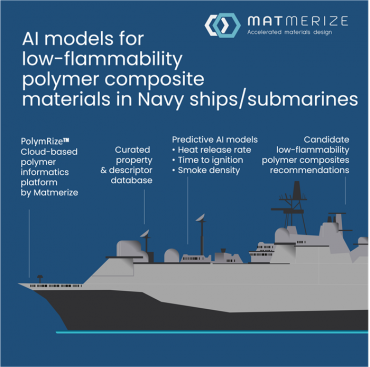
Verisk (Nasdaq: VRSK) is a leading strategic data analytics and technology partner to the global insurance industry. (Image from Verisk Facebook)
BOSTON, Oct. 16, 2024 (Korea Bizwire) – The Extreme Event Solutions group at Verisk (Nasdaq: VRSK), a leading global data analytics and technology provider, estimates that insured industry losses to onshore property for Hurricane Milton will fall between USD 30 billion and USD 50 billion. This estimate includes losses due to wind, privately insured estimates of storm surge, and privately insured precipitation induced flood losses resulting from Milton’s landfall in Florida. The majority of the insured loss is attributable to wind.
Meteorological History of Milton
Milton became a hurricane on October 6 and continued to steadily strengthen through the overnight hours, becoming a Category 2 hurricane, while moving generally eastward at a slightly faster pace.
This strengthening overnight and into October 7 marked the beginning of a nearly unprecedented episode of rapid intensification for Milton that saw the hurricane become a major hurricane around daybreak and reach Category 5 intensity around midday. Milton would continue strengthening during the second half of the day, reaching its peak intensity that evening with maximum sustained winds of 180 mph and a minimum central pressure of 897 mb as recorded by a Hurricane Hunters mission, making it the fifth lowest pressure of any Atlantic hurricane ever recorded. Milton’s central pressure dropped an astounding 84 mb in 24 hours (the third fastest Atlantic basin rapid intensification on record, behind Felix and Wilma), and in less than 24 hours, the system had gone from a fledgling Category 1 hurricane to a powerful Category 5 storm.
On October 9, conditions began to deteriorate across the southern Florida Peninsula as Milton’s outer bands began to reach shore, led by a robust tornado threat owing to the highly sheared environment over Florida produced dozens of reports across the southern part of the state during the day. Several of these tornadoes caused structural and roof damage to buildings in populated areas like Fort Myers on the Gulf Coast and Vero Beach on the Atlantic Coast.
Meanwhile, the same increasing wind shear that aided in the tornado threat was acting to steadily decrease Milton’s maximum intensity through the day, but also acted to expand its wind field, especially on the storm’s northwest side. As a result, by late afternoon tropical storm conditions were impacting much of the Florida Peninsula and as far west as Mexico Beach. Around this time, Milton’s heaviest rainfall bands were slamming into Florida’s central west coast and producing rainfall rates of 3-5 inches per hour that for some locations persisted for several hours. This core of rainfall gradually made its way inland, reaching Orlando shortly before midnight. Preliminary rainfall totals show just over 18 inches fell in Saint Petersburg and 11 inches at Tampa International Airport, leading to flash flooding and compounding the effects of storm surge along the coast. Significant flooding was observed at points along the coast and well inland.
Milton’s wobbling track ultimately steered the system south of Tampa, making landfall in Siesta Key and South Sarasota around 8:30 p.m. as a Category 3 hurricane per the NHC. Despite the storm’s major hurricane status, the highest measured maximum sustained wind over land was 78 mph, or low-end Category 1 strength, in Venice. A few locations reported gusts of over 100 mph. It should be noted that there were likely higher sustained winds and wind gusts over land in some locations, especially near Milton’s landfall location, but there either was no instrumentation to measure these winds, or the instrumentation had failed because of power outages. The winds resulted in major structural damage near Tampa and St. Petersburg. In downtown Tampa, the roof was ripped off Tropicana Field and a crane was blown over into the Tampa Bay Times office building.
Areas south of the landfall point experienced significant to catastrophic levels of storm surge from Milton. For example, the storm surge exceeded 10 feet in Sarasota and 5 feet in Fort Myers.
Milton continued to produce hurricane conditions for an isolated region near the storm’s core and widespread tropical storm conditions as it tracked east-northeast across the Florida Peninsula overnight. By 5 a.m., Milton was moving off the Florida east coast, still a low-end hurricane.
Putting Damage in Perspective from the Context of Building Codes
Florida has a long history when it comes to the evolution and adoption of building codes. Right from its very first adoption of the statewide building code in 2002, it has been a pioneer nationally in wind design specifications.
The building code stipulated wind speeds that guide the design of residential and commercial buildings in southwest Florida are in excess of 150 mph (3-sec gust values) across these code versions. Further, vast swaths of areas where Milton made landfall fall under the windborne debris regions which require openings to be protected. Wind speeds that were observed in areas impacted by Milton, at landfall and further inland, fall well below the design levels. However, more than 50 percent of the risks in counties along the Gulf coast are built before the first version of the FBC came into effect. While a significant portion of the inventory is over 20 years old, the age of the roof can also provide a valuable insight into expected building performance since roofs are the first lines of defense when it comes to wind. We see that a significant portion of these risks have been reroofed within the last decade. Additionally, at least 65 percent or more of these roofs have been newly built or reroofed in the FBC era.
When it comes to appurtenant structures such as screened enclosures, these are designed to much lower levels in comparison to the main building. Typically, these design levels are in the order of 140 mph (3-sec gust values). The relatively flimsy nature of materials that go into their construction combined with aging and deterioration impacts make these more vulnerable to damage. Further, the wind speeds that Milton brought to some of the impacted areas right around landfall could be around these design levels and therefore significant damage should be expected to these structures.
Manufactured homes on the other hand are designed and constructed using the federal Housing and Urban Development (HUD) standards. These standards have not changed since 1995 and specify design levels of 110 mph (fastest mile) without any additional safety factors. This is equivalent to approximately 130 mph on 3-sec gust basis. Depending on the age and level of deterioration of the manufactured home building stock and more importantly their respective tie downs (or lack of), the wind speeds that Milton brought to some of the impacted areas right around landfall could lead to widespread damage to these even though it was below their design levels.
Interactions with Damage from Hurricane Helene
Helene and Milton impacting Florida back-to-back over such a short time period could have some impacts on loss development and settlement for both storms. Only Ivan and Jeanne in 2004 hit Florida as major hurricanes over a shorter period than Helene and Milton going back to 1851. One challenge that is likely to arise is over the attribution of loss to each event. Areas around Tampa Bay, south to Siesta Key, and along the coast due south toward Fort Myers were all impacted by both storms. The area south of Tampa saw significant storm surge from both events. In addition to claims settlement challenges, the back-to-back coastal flooding events could lead to aggregate flood limits being reached in some cases. One aspect that is unique when it comes to Hurricane Milton is the debris pile up and non-removal of the same following Hurricane Helene, which impacted some of the same counties along the Gulf Coast a few weeks ago. There are numerous images and reports of massive debris left outside properties, on the streets which could have further exacerbated damage from Hurricane Milton by acting as projectile sources, despite efforts to clean up before Milton’s arrival.
“The U.S. is once again faced with recovering from a devastating hurricane that tragically took the lives of many individuals,” said Rob Newbold, president of Verisk Extreme Event Solutions. “We are committed to learning from these events to support the safety, security and resilience of the people and communities affected, and of others across the world.”
It should be noted that while Milton is expected to have a significantly higher insured loss tally than Helene, the difference between the events insured losses is driven in large part by the lower take up rates on flooding in areas impacted by Helene, particularly inland areas impacted by precipitation-induced flooding.
Also, Verisk’s modeling of both storms indicates that the overall levels of damage between the two events are comparable but given much higher proportion of loss due to wind from Milton, a far higher percentage of the potentially insurable loss will be paid out by the insurance industry.
Included in the industry insured loss estimate are losses to onshore residential, commercial, and industrial properties and automobiles for their building, contents, and time element coverage, as well as the impact of demand surge.
Verisk’s loss estimates do not include:
- Losses paid out by the National Flood Insurance Program
- Losses exacerbated by litigation, fraudulent assignment of benefits, or social inflation
- Storm surge leakage losses paid on wind only policies due to government intervention
- Losses to inland marine, ocean-going marine cargo and hull, and pleasure boats
- Losses to uninsured properties
- Losses to infrastructure
- Losses from extra-contractual obligations
- Losses from hazardous waste cleanup, vandalism, or civil commotion, whether directly or indirectly caused by the event
- Losses resulting from the compromise of existing defenses (e.g., natural and man-made levees)
- Loss adjustment expenses
- Other non-modeled losses, including those resulting from tornadoes spawned by the storm
- Losses for U.S. offshore assets and non-U.S. property
###
About Verisk
Verisk (Nasdaq: VRSK) is a leading strategic data analytics and technology partner to the global insurance industry. It empowers clients to strengthen operating efficiency, improve underwriting and claims outcomes, combat fraud and make informed decisions about global risks, including climate change, extreme events, sustainability and political issues. Through advanced data analytics, software, scientific research and deep industry knowledge, Verisk helps build global resilience for individuals, communities and businesses. With teams across more than 20 countries, Verisk consistently earns certification by Great Place to Work and fosters an inclusive culture where all team members feel they belong. For more, visit Verisk.com and the Verisk Newsroom.

Mary Keller
Verisk
339-832-7048
mary.keller@verisk.com
Source: Insurance Services Office, Inc. (Verisk) via GLOBE NEWSWIRE







